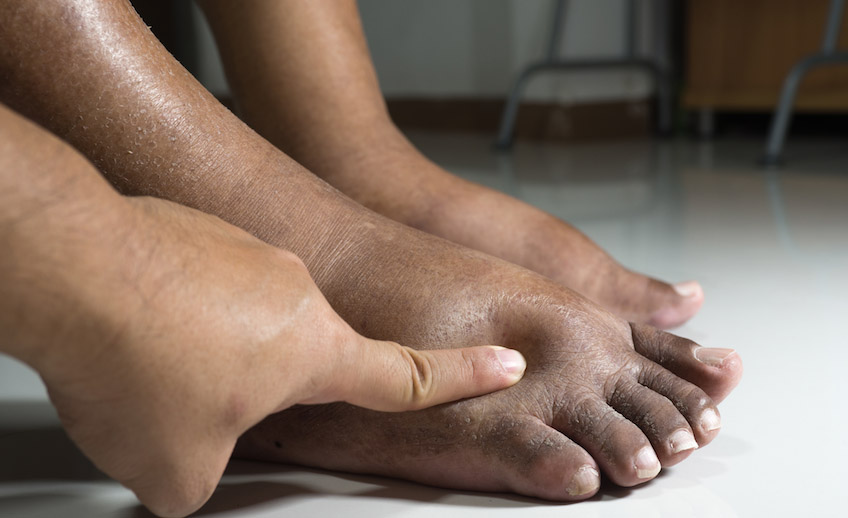Diabetic and vascular conditions
Diabetic and vascular conditions can significantly impact foot health, leading to serious complications if left untreated. People with diabetes or poor circulation are at higher risk for foot infections, ulcers, and slow-healing wounds, making preventive care essential.
If you have diabetes, neuropathy, or vascular disease, proactive foot care is essential. Regular foot exams, proper footwear, and early intervention can help reduce the risk of severe complications.
How does diabetes affect your feet?
Diabetes affects the feet in multiple ways, primarily through nerve damage (neuropathy) and poor circulation. These conditions make it difficult to feel pain, temperature changes, or injuries, increasing the risk of undetected wounds and infections. High blood sugar levels also slow healing, making even minor cuts or blisters a serious concern. Without proper care, untreated foot injuries can develop into ulcers, infections, and, in severe cases, lead to amputation.
What is neuropathy?
Neuropathy is nerve damage caused by prolonged high blood sugar levels, affecting sensation in the feet. Symptoms may include:
- Numbness or tingling in the toes and feet
- Burning pain or sensitivity to touch
- Loss of feeling, making it hard to detect cuts, blisters, or pressure sores
- Muscle weakness, leading to foot deformities or balance issues
If you experience any of these symptoms, it’s important to see a specialist to prevent further damage and manage the condition effectively.
What are diabetic foot ulcers and how are they treated?
Diabetic foot ulcers are open sores or wounds that develop due to poor circulation and neuropathy. These ulcers can become infected quickly and may require specialized wound care, including:
- Debridement (removal of dead tissue) to promote healing
- Advanced dressings designed for diabetic wounds
- Offloading techniques, such as custom orthotics or special footwear, to relieve pressure
- Infection management, including antibiotics or more advanced treatments if necessary
Early detection and treatment are critical to preventing serious complications.
How do vascular diseases affect your feet?
Poor circulation from vascular diseases, such as peripheral arterial disease (PAD), increases the risk of slow-healing wounds, ulcers, and infections. PAD occurs when arteries become narrowed or blocked, reducing blood flow to the legs and feet. Common symptoms include:
- Cold feet or toes
- Leg pain or cramping when walking
- Wounds that take a long time to heal
- Discoloration or hair loss on the feet and lower legs
Since reduced circulation makes it harder for the body to fight infections and heal wounds, early diagnosis and treatment are crucial. Our podiatrists can assess blood flow, recommend lifestyle changes, and provide treatment options such as medications or minimally invasive procedures to improve circulation.

